Founding and early years (1898–1918)
The Renault corporation was founded in 1899 as Société Renault Frères by Louis Renault and his brothers Marcel and Fernand.[9][19] Louis was a bright, aspiring young engineer who had already designed and built several prototypes before teaming up with his brothers, who had honed their business skills working for their father's textile firm. While Louis handled design and production, Marcel and Fernand managed the business.[20]
The first Renault car, the Renault Voiturette 1CV, was sold to a friend of Louis' father after giving him a test ride on 24 December 1898.
In 1903, Renault began to manufacture its own engines; until then it had purchased them from De Dion-Bouton. The first major volume sale came in 1905 when Société des Automobiles de Place bought Renault AG1 cars to establish a fleet of taxis.[21] These vehicles were later used by the French military to transport troops during World War Iwhich earned them the nickname "Taxi de la Marne."[22] By 1907, a significant percentage London and Paris taxis had been built by Renault.[21] Renault was also the best-selling foreign brand in New York in 1907 and 1908.[23] In 1908 the company produced 3,575 units, becoming the country's largest car manufacturer.[21]
The brothers recognised the value of publicity that participation in motor racing could generate for their vehicles. Renault made itself known through succeeding in the first city-to-city races held in Switzerland, producing rapid sales growth. Both Louis and Marcel raced company vehicles, but Marcel was killed in an accident during the 1903 Paris-Madrid race.[24] Although Louis never raced again, his company remained very involved, including Ferenc Szisz winning the first Grand Prix motor racing event[25] in a Renault AK 90CV in 1906.
Louis took full control of the company as the only remaining brother in 1906 when Fernand retired for health reasons.[20]Fernand died in 1909 and Louis became the sole owner, renaming the company Société des Automobiles Renault (Renault Automobile Company).[9][21]
Renault fostered its reputation for innovation from very early on. At the time, cars were luxury items. The price of the smallest Renaults at the time were 3000 francs; an amount equal to ten years pay for the average worker. In 1905 the company introduced mass-production techniques and Taylorism in 1913.[26]
Renault manufactured buses and commercial cargo vehicles in the pre-war years. The first real commercial truck from the company was introduced in 1906.[27] During World War I, it branched out into ammunition, military aircraft engines[21] (the first Rolls-Royce aircraft engines were Renault V8 units)[28][29] and vehicles such as the revolutionary Renault FT tank.[26]The company's military designs were so successful that Louis was awarded the Legion of Honour for his company's contributions.[30] The company exported engines to American auto manufacturers for use in such automobiles as the GJG, which used a Renault 26 hp or 40 hp four-cylinder engine.[31]
Interwar years (1919–1938)[edit]
Louis Renault enlarged Renault's scope after 1918, producing agricultural and industrial machinery. The war led to many new products.[32] The first Renault tractor, the Type GP was produced between 1919 and 1930. It was based on the FT tank.[33]Renault struggled to compete with the increasingly popular small, affordable "people's cars", while problems with the stock market and the workforce slowed the company's growth. Renault also had to find a way to distribute its vehicles more efficiently. In 1920, Louis signed one of its first distribution contracts with Gustave Gueudet, an entrepreneur from northern France.
The pre-First World War cars had a distinctive front shape caused by positioning the radiator behind the engine to give a so-called "coalscuttle" bonnet. This continued through the 1920s.[34] Only in 1930 did all models place the radiator at the front. The bonnet badge changed from circular to the familiar and continuing diamond shape in 1925.
Renault introduced new models at the Paris Motor Show that was held in September or October of the year. This led to confusion about model years. For example, a "1927" model was mostly produced in 1928.
Renault cars ranged from small to very large. For example, in 1928, when Renault produced 45,809 cars, its seven models started with a 6cv, a 10cv, the Monasix, 15cv, the Vivasix, the 18/22cv and the 40cv. Renault offered eight body styles. The larger chassis were available to coachbuilders. The smaller were the most popular while the least produced was the 18/24cv. The most expensive body style in each range was the closed car. Roadsters and tourers (torpedoes) were the cheapest.
The London operation was important to Renault in 1928. The UK market was quite large and "colonial" modified vehicles were dispatched from there to North America. Lifted suspensions, enhanced cooling and special bodies were common on vehicles sold abroad. Exports to the US by 1928 had declined to near-zero from their high point prior to WWI. A NM 40cv Tourer had a US list price of over $4,600, about the same as a Cadillac V-12. Closed 7-seat limousines started at $6,000 which was more expensive than a Cadillac V-16.
Cars were conservatively engineered and built. The Vivasix, model PG1, was sold as the "executive sports" model beginning in 1927. Lighter weight factory steel bodies powered by a 3180 cc six-cylinder motor provided a formula that lasted until the Second World War.
The "de Grand Luxe Renaults", those with a wheelbase over 12-foot (3.7 m), were produced in small numbers in two major types – six- and eight-cylinder. The 1927 six-cylinder Grand Renault models NM, PI and PZ introduced the new three spring rear suspension that considerably aided stability that was needed since some vehicles surpassed 90 mph (140 km/h).
The 8-cylinder Reinastella was introduced in 1929 and expanded to a range culminating in the 1939 Suprastella. Coachbuilders included Kellner, Labourdette, J. Rothschild et Fils and Renault bodies. Closed car Renault bodies were often trimmed with interior woodwork by Rothschild.
In 1928 Renault introduced an upgraded specification to its "Stella" line. The Vivastella's and Grand Renaults had upgraded interior fittings and a small star fitted above the front hood logo. This proved to be a winning differentiator and in the 1930s all cars changed to the Stella suffix from the previous two alpha character model identifiers.
The Grand Renaults were built using a considerable amount of aluminium. Engines, brakes, transmissions, floor and running boards and all external body panels were aluminium. Of the few that were built, many went to scrap to aid the war effort.
In 1931, Renault introduced diesel engines for its commercial vehicles.[27]
Renault was one of the few French vehicle manufactures that pursued the production of aircraft engines after World War I. In the late 1920s it attempted to produce a high-power military engine to compete with the American Pratt & Whitney units, which proved unsuccessful, although its civil engines achieved better results.[36] In the 1930s the company took over the aircraft manufacturer Caudron, focusing its production in small airplanes,[36] acquired a stake in Air France and partnered to establish the airmail company Air-Bleu.[37] Renault Caudron airplanes settled several speed world records during the 1930s. Renault continued developing tanks as part of France's rearming effort, including the D1 and the FT's replacement, the R 35.[38]
During the late 1920s and early 1930s, Renault was surpassed by Citroën as the largest car manufacturer in France. Citroën models at the time were more innovative and popular than Renault's.[39] However, by mid-1930s the French manufacturers were hit by the Great Depression. Renault could initially offset losses through its tractor, railroad and weaponry businesses while Citroën filed for bankruptcy and was later acquired by Michelin.[37] Renault became again the largest car manufacturer, a position it would keep until the 1980s.[37]
Renault was finally affected by the economic crisis in 1936. The company sold Caudron and spun off its foundry and aircraft engine divisions into related but autonomous operations, keeping its core automotive business.[37] Between 1936 and 1938, a series of labour disputes, strikes, and worker unrest spread throughout the French automobile industry.[40] The disputes were eventually quashed by Renault in a particularly intransigent way, and over 2,000 people lost their jobs.[40][41]
World War II and aftermath (1939–1944)[edit]
After the French capitulation in 1940, Louis Renault refused to produce tanks for Nazi Germany, which took control of his factories. He produced trucks instead. On 3 March 1942, the British Royal Air Force (RAF) launched 235 low-level bombers at the Billancourt plant, the largest number aimed at a single target during the war.[42] 460 tons of bombs were dropped on the plant and the surrounding area, causing extensive damage along with heavy civilian casualties.[43] Renault resolved to rebuild the factory as quickly as possible, but bombardments continued a year later, on 4 April, this time delivered by the Americans, and on 3 and 15 September 1943.[43]
A few weeks after the Liberation of Paris, at the start of September 1944, the factory gates at Renault's Billancourt plant reopened.[43] Operations restarted slowly, in an atmosphere poisoned by plotting and political conspiracy.[43] In 1936 the Billancourt factory had been the scene of violent political and industrial unrest that had surfaced under Leon Blum'sPopular Front government. The political jostling and violence that followed liberation ostensibly reflected the rivalries between capitalist collaboration andcommunist resistance, many of the scores settled predated the invasion.[43]
Responding to the chaotic situation at Renault, a 27 September 1944 meeting of the Council of (the provisional government's) Ministers took place under de Gaulle's presidency. Postwar European politics had quickly become polarised between communists and anti-communists, and in France De Gaulle was keen to resistCommunist Party attempts to monopolise the political dividends available to resistance heroes: politically Billancourt was a communist stronghold. The government decided to "requisition" the Renault factories.[43] A week later, on 4 October Pierre Lefaucheux, a resistance leader with a background in engineering and top-level management, was appointed provisional administrator of the firm, assuming his responsibilities at once.[43]
Meanwhile, the provisional government accused Louis Renault of collaborating with the Germans. In the frenzied atmosphere of those early post-liberation days, with many wild accusations, Renault was advised by his lawyers to present himself to a judge. He appeared before Judge Marcel Martin, on 22 September 1944[43]and was arrested on 23 September 1944, as were several other French auto-industry leaders.[43] Renault's harsh handling of the 1936–1938 strikes had left him without political allies and no one came to his aid.[44] He was incarcerated at Fresnes prison where he died on 24 October 1944 under unclear circumstances,[45]while awaiting trial.[46][47]
On 1 January 1945, by de Gaulle's decree, the company was posthumously expropriated from Louis Renault. On 16 January 1945 it was formally nationalised as Régie Nationale des Usines Renault.[43] Renault's were the only factories permanently expropriated by the French government.[48] In subsequent years, the Renault family tried to have the nationalisation rescinded by French courts and receive compensation. In 1945 and again in 1961 the Courts responded that they had no authority to review the government's actions.[44]
Postwar resurgence (1945–1971)[edit]
Under the leadership of Pierre Lefaucheux, Renault experienced both a commercial resurgence and labor unrest, that was ultimately to continue into the 1980s.
In secrecy during the war, Louis Renault had developed the rear engine 4CV[50] which was subsequently launched under Lefacheux in 1946. Renault debuted its flagship model, the largely conventional 2-litre 4-cylinder Renault Frégate (1951–1960), shortly thereafter. The 4CV proved a capable rival for cars such as the Morris Minor and Volkswagen Beetle; its sales of more than half a million ensured its production until 1961.
After the success of the 4CV, Lefacheux continued to defy the postwar French Ministry of Industrial Production, which had wanted to convert Renault solely to truck manufacture,[51] by directing the development of its successor. He oversaw the prototyping of the Dauphine (until his death), enlisting the help of artist Paule Marrot in pioneering the company's textile and color division.
The Dauphine sold well as the company expanded production and sales further abroad, including Africa and North America.[52]The Dauphine sold well initially in the US, although it subsequently became outdated against increased competition, including from the country's nascent domestic compacts such as the Chevrolet Corvair. Renault also sold the Renault Caravelle roadster, which was called the Floride outside North America.
During the 1950s, Renault absorbed small French heavy vehicles' manufacturers (Somua and Latil) and in 1955 merged them with its own truck and bus division to form the Société Anonyme de Véhicules Industriels et d'Equipements Mécaniques (Saviem).[53]
Renault then launched two successful cars – the Renault 4 (1961–1992), a practical competitor for the likes of the Citroën 2CV, and Renault 8.[32] The larger rear-engined Renault 10 followed the success of the R8, and was the last rear-engined Renault. The company achieved success with the more modern and more upmarket Renault 16, a pioneering hatchback launched in 1966, followed by the smaller Renault 6.
On 16 January 1970 the manufacturer celebrated the 25th anniversary of its 1945 rebirth as the nationalised Régie Nationale des Usines Renault. The 1960s had been a decade of aggressive growth: a few months earlier, in October 1969, the manufacturer had launched the Renault 12, combining the engineering philosophy of its hatch-backs with the more conservative "three-box" design. The four-door Renault 12 model fit between the Renault 6 and Renault 16. The model was a success. 1970 was also the first year during which Renault produced more than a million cars in a single year, building 1,055,803.[54]
Modern era (1972–1980)[edit]
The company's compact and economical Renault 5 model, launched in January 1972,[55] was another success, anticipating the1973 energy crisis.[32] Throughout the 1970s the R4, R5, R6, R12, R15, R16 and R17 maintained Renault's production with new models including the Renault 18 and Renault 20.
During the mid seventies the already broad-based company diversified into more industries and continued to expand globally, including South East Asia. The energy crisis led Renault to again attempt to attack the North American market. Despite the Dauphine's success in the United States in the late 1950s and an unsuccessful assembly project in Saint-Bruno-de-Montarville, Quebec, (1964–72), Renault began to disappear from North America at the end of the decade.
Over the decades Renault had developed a collaborative partnership with Nash Motors Rambler and its successor American Motors Corporation (AMC). From 1962 to 1967, Renault assembled complete knock down (CKD) kits of the Rambler Classic sedans in its factory in Belgium.[56] Renault did not have large or luxury cars in its product line and the "Rambler Renault" was positioned as an alternative to the Mercedes-Benz "Fintail" cars. Later, Renault continued to make and sell a hybrid of AMC's Rambler American and Rambler Classic called the Renault Torino in Argentina (sold through IKA-Renault). Renault partnered with AMC on other projects, such as a rotary concept engine in the late 1960s.
In the late 1960s and 1970s the company established subsidiaries in Eastern Europe, most notably Dacia in Romania, and South America (many of which remain active) and forged technological cooperation agreements with Volvo and Peugeot,[57] (for instance, for the development of the PRV V6 engine, which was used in Renault 30, Peugeot 604, and Volvo 260 in the late 1970s).
In the mid-1960s Renault Australia was set up in Melbourne. The company produced and assembled models including the R8, R10, R12, R16, sporty R15, R17 coupe's, R18 and R20. The unit closed in 1981. Renault Australia also built and marketed Peugeots. From 1977, they assembled Ford Cortina station wagons under contract- the loss of this contract ended the factory.[citation needed]
When Peugeot acquired Citroën and formed PSA, the group's collaboration with Renault was reduced, although established joint production projects were maintained. Prior its merging with Peugeot, Citroën sold to Renault the truck and bus manufacturerBerliet in 1975,[57] merging it with its subsidiary Saviem in 1978 to create Renault Véhicules Industriels, which became the only French manufacturer of heavy commercial vehicles.[27][53] In 1976, Renault reorganised the company into four business areas: automobiles (for car and light commercial vehicles or LCVs), finance and services, commercial vehicles (coaches and trucks over 2.5 tons GVW), and minor operations under an industrial enterprises division (farm machinery, plastics, foundry, etc.). In 1980, Renault produced 2,053,677 cars and LCVs. The cars at the time were the Renault 4, 5, 6, 7, 12, 14, 16, 18, 20 and 30; the LCVs were the 4, 5 and 12 Société and the Estafette. The company added 54,086 buses/coaches and trucks.[57]
In North America, Renault partnered with American Motors, lending AMC operating capital and buying a minority 22.5% stake in the company in late 1979. The first Renault model sold through AMC's dealerships was the R5, renamed Renault Le Car. Jeep was keeping AMC afloat until new products, particularly the XJ Cherokee, could be launched. When the bottom fell out of the 4×4 truck market in early 1980 AMC was in danger of bankruptcy. To protect its investment, Renault bailed AMC out with cash – at the price of a controlling 47.5% interest.[58] Renault replaced some AMC executives, and Jose J. Dedeurwaerder of Renault became President of AMC.[32]
The partnership resulted in the marketing of Jeep vehicles in Europe.[32] The Jeep XJ Cherokee may have been a joint AMC/Renault project, since some early sketches of the XJ series were made in collaboration by Renault and AMC engineers (AMC insisted that the XJ Cherokee was designed by AMC personnel; even though a former Renault engineer designed the Quadra-Link front suspension for the XJ series).[59] The Jeep also used wheels and seats from Renault. Part of AMC's overall strategy was to save manufacturing cost by using Renault parts and engineering expertise when practical. This led to the improvement of the venerableAMC in-line six – a Renault/Bendix-based port electronic fuel injection system (usually called Renix) transformed it into a modern, competitive powerplant with a jump from 110 to 177 hp (82 to 132 kW) with less displacement (from 4.2L to 4.0L). The XJC Cherokee concept which was conceived in 1983 as a successor to the XJ series was also a joint collaboration with AMC and Renault engineers until the design was inherited by the Chrysler Corporation in late 1987 after Renault divested AMC - which debuted in 1989 as the Jeep Concept 1 (evolving into the Jeep Grand Cherokee in April 1992).
The Renault-AMC marketing effort in passenger cars was not successful compared to the popularity for Jeep vehicles. This was because by the time the Renault range was ready, the second energy crisis was over, taking with it much of the desire for economical, compact cars. One exception was the Renault Alliance (an Americanised version of the Renault 9), which debuted for the 1983 model year. Assembled at AMC's Kenosha, Wisconsin plant,[58] the Alliance received Motor Trend's domestic Car of The Year award in 1983.[60] The Alliance's 72% U.S. content allowed it to qualify as a domestic vehicle, making it the first car with a foreign nameplate to win the award. (In 2000, Motor Trend did away with separate awards for domestic and imported vehicles.)
US releases in the 1980s included the Renault Alliance GTA and GTA convertible – an automatic-top convertible with a 2.0 L engine – big for a car of its class and the Renault Fuego coupe. The Alliance was followed by the Encore (U.S. version of the Renault 11), an Alliance-based hatchback.[58] In 1982 Renault become the second European automaker to build cars in the United States, after Volkswagen. However, Renaults quickly became the target of customer complaints for poor quality and sales plummeted.
Eventually, Renault sold AMC to Chrysler in 1987 after the assassination of Renault's chairman, Georges Besse.[32] The Renault Medallion (Renault 21 in Europe) sedan and wagon was sold from 1987 to 1989 through Jeep-Eagle dealerships. Jeep-Eagle was the division Chrysler created out of the former American Motors. Renault imports ended after 1989. A completely new full-sized 4-door sedan, the Eagle Premier, was developed during the partnership between AMC and Renault. The Premier design, as well as its state-of-the-art manufacturing facility in Bramalea, Ontario, Canada, were the starting point for the sleek LH sedans such as theEagle Vision and Chrysler 300M.
In early 1979, as part of its attempts to expand into the American market, Renault bought a 20% minority stake in the truck manufacturer Mack Trucks.[61] The aim of this operation was to make use of the company's extensive delearship network to distribute light trucks.[62] In 1983, Renault increased its stake in Mack Trucks to 44.6%.[61][62] In 1987, it transferred the ownership of a 42% stake to Renault Véhicules Industriels.[63]
In the late seventies and early eighties Renault increased its involvement in motorsport, with novel inventions such as turbochargers in their Formula One cars. Renault's head of engines, Georges Douin, orchestrated the installation of turbocharged engines across much of the Renault range beginning in 1980. 10% of all turbocharged European cars in 1984 were Renaults.[64] The company's road car designs were revolutionary in other ways also – the Renault Espace was one of the first minivans and was to remain the most well-known minivan in Europe for the next two decades. The second-generation Renault 5, the European Car of the Year-winning Renault 9, and the most luxurious Renault yet, the aerodynamic 25 were all released in the early 1980s. At the same time poor product quality damaged the brand. The ill-fated Renault 14 may have been the culmination of these problems in the early 1980s.
Restructuring (1981–1995)[edit]
Renaults were somewhat successful on both road and track, including the 1984 Espace launch, which was Europe's first multi-purpose vehicle, a dozen years before any competitor. However, Renault was losing a billion francs a month totaling 12.5 billion in 1984. The government intervened and Georges Besse was installed as chairman; he set about cutting costs dramatically, selling many of Renault's non-core assets (Volvo stake, Gitane, Eurocar and Renix), withdrawing almost entirely from motorsports and laying off many employees.[65] This halved the deficit by 1986, but Besse was murdered by the communist terrorist group Action Directe in November 1986. He was replaced by Raymond Lévy, who continued Besse's initiatives, slimming the company enough that by the end of 1987, Renault was more or less financially stable. However, while Besse was convinced that Renault needed a presence in the North American market and wanted to push forward with restructuring American Motors, Lévy, facing domestic losses from Renault at home, and losses from American Motors in the United States, along with the political climate that led to Besse's assassination, decided to sell American Motors toChrysler that same year.
The Renault 9, a small four-door family saloon, was voted European Car of the Year on its 1981 launch. It sold well inFrance, but was eventually eclipsed by the Renault 11 hatchback, as the hatchback bodystyle became more popular on this size of car. The Renault 5 entered its second generation in 1984 and continued to sell well. The long-running Renault 18 was replaced by the Renault 21 early in 1986, adding a seven-seater estate badged as the Nevada or Savanna depending on where it was sold. Renault's top of the range model in the 1980s was the Renault 25, launched at the end of 1983.
In 1990, Renault strengthened its collaboration with Volvo by signing an agreement that allowed both companies to reduce vehicle conception costs and purchasing expenses. Renault had access to Volvo expertise in upper market segments and in return Volvo exploited Renault designs for low and medium segments. In 1993 the two companies announced their intention to merge operations by 1 January 1994 and increased their cross-shareholding. The French accepted the merger, while Volvo shareholders rejected it.[65]
A revitalised Renault launched successful new cars in the early 1990s, accompanied by an improved marketing effort on European markets,[65] including the 5 replacement, the Clio in May 1990.[32] The Clio was the first new model of a generation that replaced numeric identifiers with traditional nameplates. The Clio was voted European Car of the Year soon after its launch, and was one of Europe's best selling cars in the 1990s, proving even more popular than its predecessor. Other important launches included the third-generation Espace in 1996 and the innovative Twingo in 1992, the first car to be marketed as a city car MPV. The Twingo was roomier than any prior cars of its size range. Twingo sales reached 2.4 million in Europe, even though the original was only built for (Continental) left-hand drive markets.[66]
Privatisation and the alliance era (1996–present)[edit]
It was eventually decided that the company's state-owned status was a detriment. By 1994 plans to sell shares to public investors were officially announced.[65] The company was privatised in 1996.[32] This new freedom allowed the company to venture once again into markets in Eastern Europe and South America, including a new factory in Brazil and upgrades for its infrastructure in Argentina and Turkey. In December 1996 General Motors Europe and Renault begun to collaborate in the development of LCVs, starting with the second generation Trafic (codenamed X83).[70]
Renault's financial problems were not all fixed by the privatisation, and Renault's President, Louis Schweitzer gave to his then deputy, Carlos Ghosn, the task of confronting them. Ghosn elaborated a plan to cut costs for the period 1998–2000, reducing the workforce, revising production processes, standardising vehicle parts and pushing the launch of new models. The company also undertook organisational changes, introducing a lean production system with delegate responsibilities inspired by Japanese systems (the "Renault Production Way"), reforming work methods and centralising research and development at its Technocentre to reduce vehicle conception costs while accelerating such conception.[65]
After Volvo's exit, Renault searched for a new partner to cope with an industry that was consolidating. Talks with BMW, Mitsubishi, Nissan, PSA and others were held yielded a relationship with Nissan, whose negotiations with Daimler had stalled.[71] Signed on 27 March 1999, the Renault–Nissan Alliance is the first of its kind involving a Japanese and a French company, including cross-ownership. Renault initially acquired a 36.8% stake at a cost of US$3.5 billion in Nissan, while Nissan in turn took a 15% non-voting stake in Renault. Renault continued to operate as a stand-alone company, but with the intent to collaborate with its alliance partner to reduce costs. The same year Renault bought a 51% majority stake of the Romanian company Dacia,[72] thus returning after 30 years, in which time the Romanians had built over 2 million cars that primarily consisted of local version of Renaults 8, 12 and 20. In 2000, Renault acquired a controlling stake of the South Korean Samsung Group's automotive division.[73]
In the late 1990s and early 2000s, Renault sold various assets to finance its inversions and acquisitions,[74] refocusing itself as a car and van manufacturer. In 1999, the company sold its industrial automation subsidiary, Renault Automation, toComau and its engine parts division to TWR Engine Components.[74] In 2001, Renault sold its 50% stake in bus/coach manufacturer Irisbus to co-owner Iveco and its logistics subsidiary CAT France to Global Automotive Logistics.[74] Following the sale of Renault Véhicules Industriels to Volvo in 2001, the company retained a minority (but controlling) stake (20%) in the Volvo Group. In 2010 Renault reduced its participation to 6.5% and in December 2012 sold its remaining shares.[75] In 2004, Renault sold a 51% majority stake in its agricultural machinery division, Renault Agriculture, to CLAAS. In 2006, CLAAS increased its ownership to 80% and in 2008 took full control.[76]
In the twenty-first century, Renault developed a reputation for distinctive, outlandish design. The second generation of theLaguna and Mégane featured ambitious, angular designs that turned out to be successful, The 2000 Laguna was the second European car to feature "keyless" entry and ignition.[77] Less successful were the company's more upmarket models. TheAvantime, a unique coupé / multi-purpose vehicle, sold poorly and was quickly discontinued while the luxury Vel Satis model also disappointed. However, the design inspired the lines of the second-generation Mégane, the maker's most successful car. As well as its distinctive styling, Renault was to become known for its car safety by the independent company EuroNCAP[78]Thus, in 2001, the Laguna achieved a 5-star rating,[78] followed in 2004 by the Modus.[79]
In April 2010, Renault-Nissan announced an alliance with Daimler. Renault supplied Mercedes-Benz with its brand new 1.6 L turbodiesel engine and Mercedes-Benz provided a 2.0 L four-cylinder petrol engine to Renault-Nissan.[80] The resulting new alliance was to develop a replacement for the Smart based on the Twingo.[81]
In February 2010, Renault opened a new production factory near Tangier, Morocco, with an annual output capacity of 170,000 vehicles.[82] Initially, it manufactured the Dacia Lodgy and Dacia Dokker models followed in October 2013[83] by the second generation Dacia Sandero. The output capacity increased to 340,000 vehicles per year with the inauguration of a second production line.[84] The site is located in a dedicated free trade area, neighboring Tanger Automotive City.[85] According to Renault, the new factory emits zero carbon and industrial liquid discharges.[86] Over 100,000 vehicles were produced there in 2013. Renault expects to eventually increase production at the Tangier plant to 400,000 vehicles per year.[87]
In December 2012 the Algeria's National Investment Fund (FNI), the Société Nationale de Véhicules Industriels (SNVI), and Renault signed an agreement to establish a factory near the city of Oran, Algeria, with the aim of manufacturing Symbol units from 2014 onwards. The production output was estimated at 25,000 vehicles. The Algerian State has a 51% stake in the facility.[88][89]
In September 2013, Renault launched its brand in Indonesia, the world's fourth most populous country, with the aim of becoming one of the top European brands there until 2016. The model range at the time of the launch consisted of the Duster (locally assembled), the Koleos and the Mégane RS.[90] Later, the Clio and the Captur were also added.[91]
In April 2015, the French government upped their stake in Renault to 19.73 percent with the aim of blocking a resolution at the next annual general meeting that could reduce its control over the company.[92]
During 2016, Renault changed position on the viability of small diesel cars in Europe, as they become significantly more expensive when re-engineered to comply with new emissions regulations as a result of the Volkswagen emissions scandal. Renault believes that all small and some mid-size will no longer be diesels by 2020.[93] However, on Friday, 13 January 2017, Renault shares fell as the Paris prosecutor started an investigation into possible exhaust emissions cheating.[94][95] Renault denied any foul play, stating compliance with French and European standards.[96]
Innovations[edit]
- 1899 : Louis Renault "Driving, speed-changing mechanism and reversing gear"[97] Louis Renault invented a revolutionary direct drive gear[98] with no drive belt, with much better uphill performances.
- 1963: Renault 8 was the first serial car with four-wheel disc brake system
- 1980 : First patents for "Braking distribution device for total adherence"[99] · [100]
- 1988 : CARMINAT, a real-time system for location and weather information. This program received European support from 1988, under the code Eureka EU-55 CARMINAT.[101] These innovations for the real-time location and human-machine interfaces are included in the Renault R-link system and Carminat Tom-Tom devices.

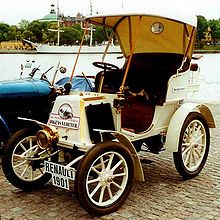

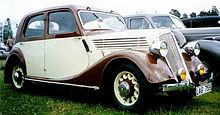
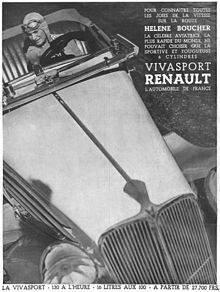
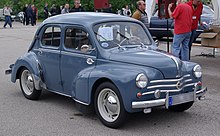

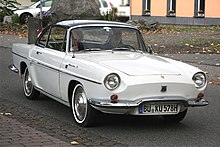
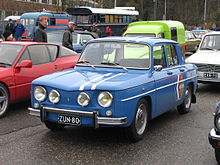




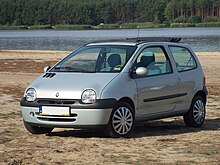

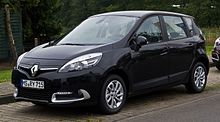



没有评论:
发表评论